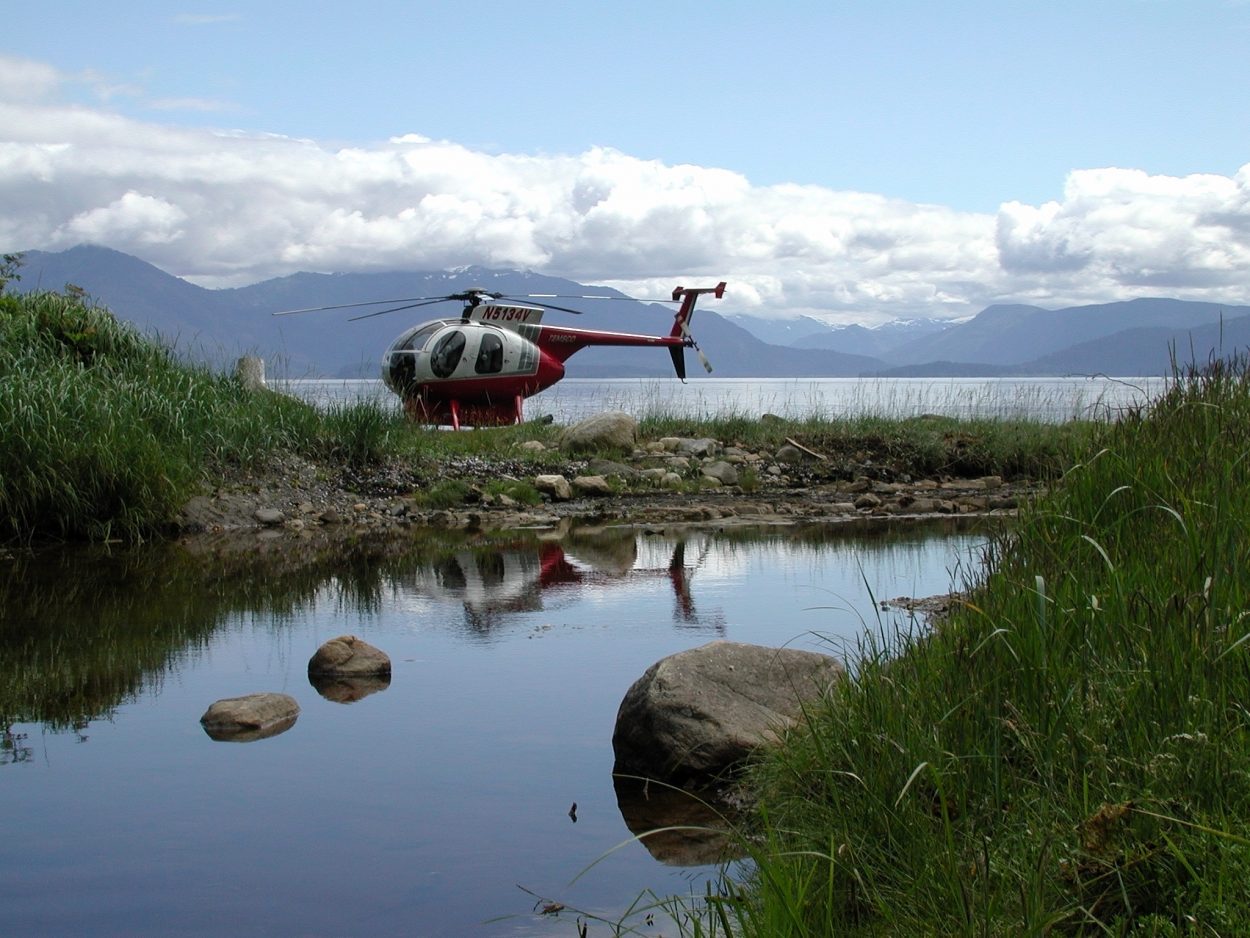
An important part of tackling climate change is understanding how carbon moves through different ecosystems. The burning of fossil fuels is often highlighted for its role in releasing carbon into the atmosphere, but features like landslides, glaciers and rivers all play a part too. A recent study examined how the carbon-rich waterways of the Tongass fit into the global carbon cycle.
When Dave D’Amore and his colleague Rick Edwards started working at the Pacific Northwest Forest Service Research Station in Juneau, the streams of the Tongass caught their attention.
“One of the things I noticed was the dark, tea-colored water coming out of the wetlands and so Rick just one day asked me, ‘Well, how much carbon do you think is in that?’” D’Amore said. “And I’m like ‘Well, I don’t know. It seems like we should probably figure that out.’”
What makes the water brown is something called dissolved carbon. It’s basically just tiny bits of organic matter.
“It’s literally hundreds or thousands of different things, different chemicals. There may be sugars, simple carbohydrates. There may be proteins. There may be complex and not very tasty organic acids,” Edwards said.
Those tiny particles were the focus of a recent study published in the Biogeosciences Journal of Geophysical research that Edwards and D’Amore headed up along with five other researchers. The goal was to figure out how much of that organic matter Southeast streams and rivers dump into the Gulf of Alaska each year.
“It’s an accounting exercise, much in the same way that you would measure and monitor the flows of money through different sectors of the economy,” Edwards said.
The researchers traveled from northern British Columbia to the southwestern tip of the Yukon gathering water samples. Then, they paired the field data with map data and statistics. What they found wasn’t insignificant. The amount of dissolved carbon being moved by the Southeast Alaska drainage basin is equivalent to 10.7 million barrels of oil.
This accounting is important for setting carbon budgets and regulating greenhouse gas emissions, D’Amore said.
“Most government agencies and nations are now trying to quantify the total amount of carbon that is either taken into the terrestrial system or released,” he said.
According to the EPA, the amount of carbon dioxide in the atmosphere has increased by more than 40 percent since the start of the industrial revolution. Because forests like the Tongass hold onto carbon, they can serve as a buffer for increasing greenhouse gas emissions. But to know how much of a buffer they actually provide, policy makers need to account for how carbon moves through the forest ecosystem.
“If you didn’t include this dissolved carbon in the total flux from that pool, you would overestimate the storage in the terrestrial system,” D’Amore said.
The paper also looked at an understudied region and provided an opportunity to collaborate across national boundaries. Two of the study’s authors were Canadian. Cross-boundary research has increased over the last decade, said geographer and another study coauthor Frances Biles.
“Before about 2010, most of our studies pretty much ended at the Canadian border just as if the watersheds just suddenly ended there and had no influence on what was happening in southeast coastal waters,” Biles said.
She credited efforts from Alaska Coastal Rainforest Center in Juneau and the Southeast Alaska GIS Library with helping foster those relationships and opening up the doors to research across the ecosystem.
Erin McKinstry is a Report for America corps member.
"cycle" - Google News
March 04, 2021 at 08:16AM
https://ift.tt/3uTUJOg
Southeast streams play important role in carbon cycle, researchers find - KCAW
"cycle" - Google News
https://ift.tt/32MWqxP
https://ift.tt/3b0YXrX
Bagikan Berita Ini















0 Response to "Southeast streams play important role in carbon cycle, researchers find - KCAW"
Post a Comment